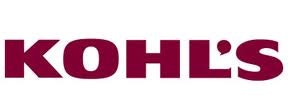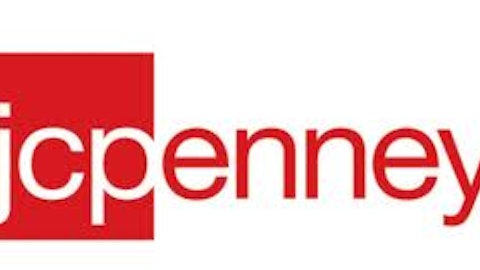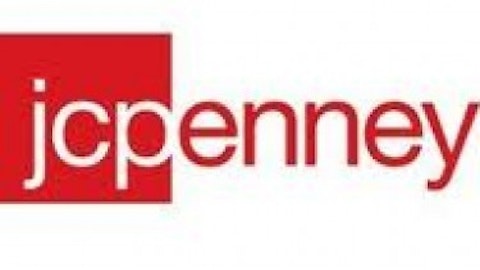Kohl’s Corporation (NYSE:KSS) one of the largest department stores, reported in-line results for fiscal 2012. But it also announced FY13 EPS guidance below analyst expectations: flat to +2% in sales and comparable same-store sales, and $4.15 to $4.45 EPS. Kohl’s continues to struggle with its increasing inventory, but during the Q4 2012 earnings call, it mentioned various improvements in its merchandising and execution strategies. In the wake of its earnings, the stock was trading at $46, at the lower end of the 52-week range of $41 – $55.
In-line but rather unexciting 4Q12 results

Q4 2012 EPS of $1.66 topped the revised guidance of $1.60 to $1.62, which the company had lowered in January from a prior range of $2.00 to $2.08.
Its cash balance declined to $537 million from $1.2 billion at the end of fiscal 2011, mainly on account of lower operating cash flow. The company continues to utilize cash flow for share repurchases ($1.3 billion) and dividends ($300 million).
Refocusing strategies
During the Q4 2012 earnings call, Kohl’s Corporation (NYSE:KSS) management acknowledged that it faced difficulties in FY12, mainly with respect to merchandising and execution strategies. It faced problems with proper pricing, high inventory, and ineffective marketing strategies. As a result, it lost out on competition, and failed to take advantage of J.C. Penney Company, Inc. (NYSE:JCP)’s declining market share.
One of Kohl’s Corporation (NYSE:KSS)’s main issues (as mentioned above) was its high level of inventory, after its spring and summer assortments failed to attract customers. At the end of fiscal 2012, inventory had increased 16.5% year over year, while accounts payable to inventory was 330 basis points lower year over year at 35.2%, primarily because of slower inventory turnover.
Management mentioned various strategies to fix the above issues:
Inventory: With a new merchandise team, Kohl’s Corporation (NYSE:KSS) aims to increase assortments and expand the number of private and exclusive brands. Furthermore, through its global inventory visibility project, it aims to better manage in-store inventory, which will help in setting up in-store pickup for online orders.
E-commerce: Currently, its e-commerce business faces the issue of low profitability, mainly due to deleveraging in shipping costs. With the aim of raising it from mid-single digit profitability to high single-digit profitability, the company will focus on broadening its assortments, as well as introducing higher-margin categories.
Pricing: Kohl’s Corporation (NYSE:KSS) believes its pricing is aggressive and does not intend to increase the depth of its promotions, unlike competitor J.C. Penney Company, Inc. (NYSE:JCP), which recently announced a decision to move toward being more promotional. Kohl’s is working toward its price management, which focuses on promotional and permanent markdown.
Advertising: Higher advertising spending, mainly through television and online, focusing on savings.
Key strengths
Kohl’s greatest strength is its management. CEO Kevin Mansell has been with the company for the last 29 years, and former CEO William Kellogg retired after 34 years but remains on the Board of Directors. Interestingly, William Kellogg had bought out Kohl’s through a leveraged buy-out in 1986, grew it under his leadership, and took it public in 1992. Kohl’s management still owns a significant stake in the company.
Despite weak economic conditions, Kohl’s has been able to hold up its cash flow generation characteristics. In 2011, it announced its first-ever dividend, then increased the dividend by 28% in 2012.
Management has a well-laid-out capital allocation strategy. In the past two decades, it has grown its stores exponentially in the United States. Now, given the low valuation of the stock, it has been decreasing capital expenditure on new stores (FY12 capital expenditure was lower by 15%) and increasing share repurchases.
The company’s building an increasing portfolio of impressive private and exclusive brands. It increased its sales from private and exclusive brands from 25% in 2004 to 48% of 2012. It can boast of brands like Jennifer Lopez and Marc Anthony, Rock and Republic, and Princess Vera Wang, giving it an advantage over competitors like J.C. Penney, Wal-Mart, and Amazon.
Is Macy’s a better stock?
Kohl’s key competitor, Macy’s, Inc. (NYSE:M) faced similar issues during November – January, i.e. weak November and December comps and strong January comps. But it posted positive comps of 2.5% during the November-December period, and strong positive comps in January, which were a result of fresh assortments that were added post-Christmas, not a dependence on clearance stocks.
Furthermore, Macy’s, Inc. (NYSE:M) has higher price points vs. Kohl’s, which help to drive higher revenue. Macy’s indeed has a better ROE vs. Kohl’s (22.28% vs. 15.71%).
On the other hand, Kohl’s definitely has a better positioning against J.C. Penney Company, Inc. (NYSE:JCP). The company continues to struggle to remold itself, and fails to deliver the desired results, continuing with its spree of losses. It has announced a plethora of initiatives like new pricing, a fresh logo, cost reduction and strategic merchandise initiatives, but those initiatives are failing and there seems to be no respite. Further, Fitch recently cut this company’s rating to ‘B-‘ from ‘B’ with a negative outlook due to lack of visibility in terms of the company’s ability to stabilize its business in 2013.
Conclusion
There has been recent news that Kohl’s might be a leveraged buy-out target, given its lower valuation. The situation may arise only if it is management-driven and, given the recent increase in share buybacks, it could be a possibility as this has happened before. Even if it doesn’t work out, the speculation may cause institutional shareholders to see the value of the stock. In my opinion, HOLD the stock and you will reap the benefits over the next few years.
The article Kohl’s Corp (NYSE:KSS) : Refocus of Strategies originally appeared on Fool.com and is written by Sujata Dutta.
Copyright © 1995 – 2013 The Motley Fool, LLC. All rights reserved. The Motley Fool has a disclosure policy.



